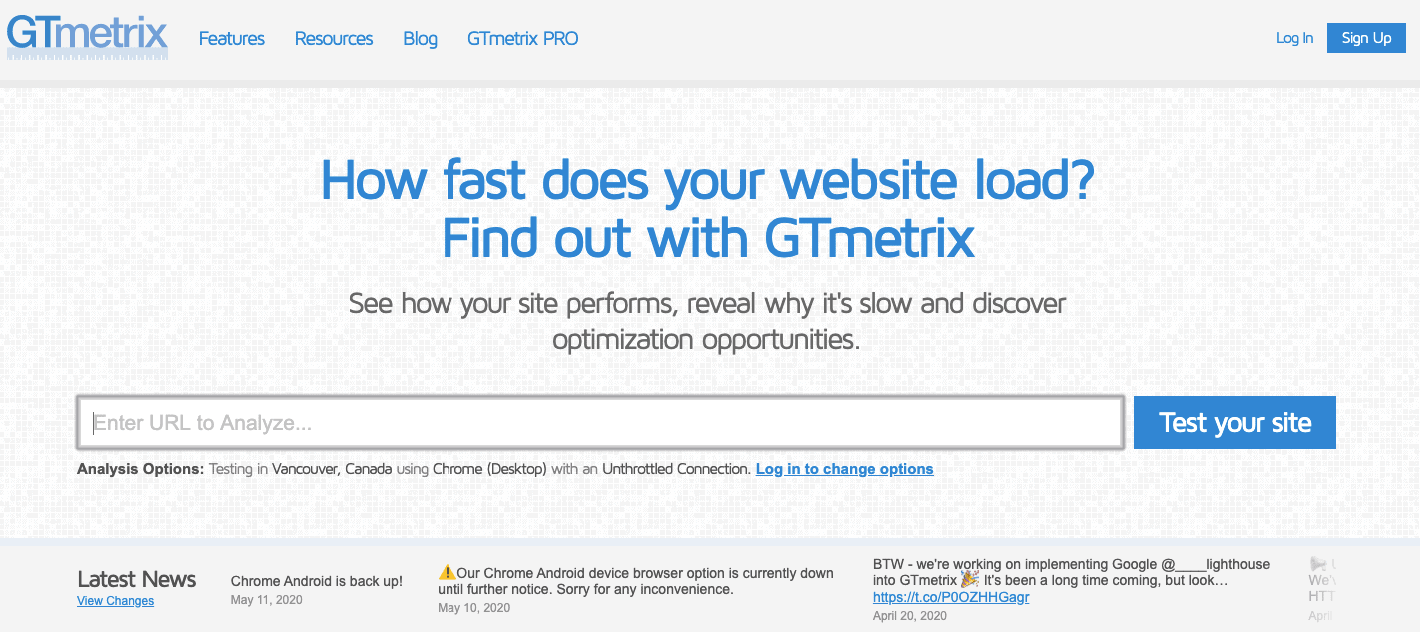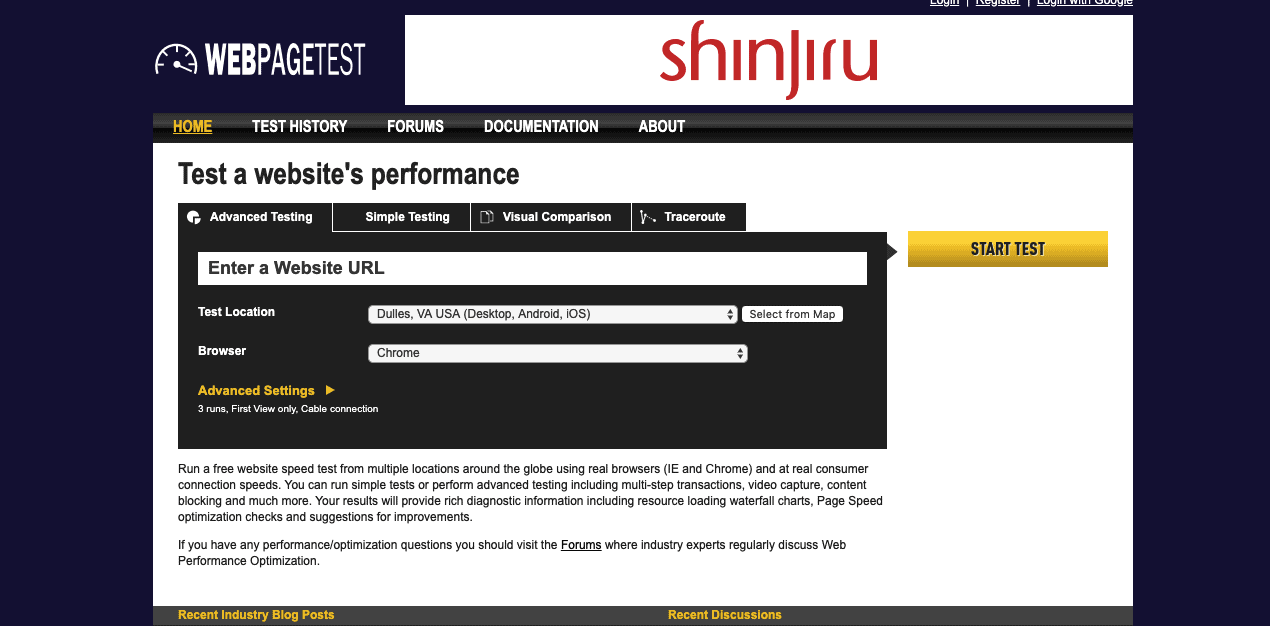The speed of your website is incredibly important. Not only can you lose a visitor/customer because your website is taking ages to load, but you will also rank lower on search engines if that is the case. Therefore, you need to be able to keep an eye on things with a reliable tool that will notify you if something's wrong and give you plenty of time to make the necessary adjustments.
Fortunately, these things are quite easy to find these days, with most of them being completely free. However, that doesn't mean you should just pick one at random. Here are the top 6 tools for checking a website's speed.
GTmetrix

Simple and straight to the point, that could be the description of GTmetrix, and it wouldn't miss much. All you have to do is paste your desired URL into the box on this tool's website and click. And that's it! The results are quite detailed, considering that this is the free version we're talking about, and your website's speed will also be compared to the rest of the internet.
In addition, because the results are broken down for you down to very small details, you will easily be able to see what, if anything, is causing you problems—definitely one of the very best tools for this job out there.
On top of that, if you need more, there are three premium tiers you can buy through a monthly subscription with things like hourly monitoring, developer toolkit, and more. Fantastic!
WebPageTest

WebPageTest is also a very popular tool. True, using it is just a tiny bit more complicated than GTmetrix, but you get more info as a reward. First of all, you can choose different locations in combinations with different web browsers on the main page, which means you can get a whole lot of data easily. On top of that, it will also include the type of device and even the user's cache into its calculations, plus you can visually compare two different websites to see the difference in their functioning.
WebPageTest is a completely free product, with no premium versions. True, it may not be as intuitive as some other tools, but given that it's free, it offers tremendous value. This is also an open-source piece of software.
PageSpeed Insights
PageSpeed Insights definitely has to be on this list, primarily because it was created by Google. This is actually an add-on you can install, and it can give you tips on how you can improve your website's loading time. Given that this advice essentially comes from Google, it certainly seems like a good idea to listen to them. You can also see what your page's PageSpeed score is.
Apart from that, the condition of your website can be broken down into components like CrUX (Chrome User Experience), FID (First Input Delay), and a few others to give you an even more detailed insight into the situation. Just like the previous entry on this list, this is also an open-source tool.
Pingdom
Another great tool, Pingdom, provides its users with loads of data, but it's also very easy to read at the same time. You can test your website from multiple locations, and you can even get notified about your potential issues via SMS or an e-mail. However, the core of this tool is composed of two types of monitoring – synthetic and real. The first simulates how a user could use your website or an app and gives you all the data you need, while the second track real users and then reports back to you.
You can get a free 14-day trial of Pingdom to get a good feel of how it works; all you have to do is request a free demo. And with 10$ a month for each type of monitoring, Pingdom really seems like a bargain when it comes to this kind of tool.
DareBoost
Now, this is an interesting one. DareBoost is a tool that allows you to compare the speed of your website to that of your competitors. The same can be done with mobile websites. Additionally, you can also track user behavior while they're visiting you. But the area in which DareBoost really shines is data visualization. Everything the tool extracts from your website will be broken down int clear visual components, so it becomes really easy to find what needs fixing. Last but not least, the tool will give you a video of how an average user sees your website when it loads to make everything as clear as possible.
You can choose between a monthly or an annual subscription, and apart from the Performance and the Business package (427$ and 68$ per month respectively, if you opt for a monthly subscription), you can also create a personalized package of features that will then be priced accordingly.
UpTrends
Finally, we will mention UpTrends. The main advantage of this tool is its design, which makes it not only easy to use but also very easy to read, so your potential issues can be identified quite quickly. Furthermore, many different locations all over the world are covered, and you can choose between four different browsers, types of bandwidth throttling, and even several sizes of your screen. And that's just for desktop computers – the performance on mobile devices can be examined separately.
If you just want to check your website's speed, you can do that here completely free. But if you want a more in-depth analytical approach, there are five different packages to choose from. Or a free trial.
Overall
So these are some of the best and most popular tools for measuring the website's speed today. Sure, there are more examples out there, and most of them will get the speed right, but the difference is in how that data is analyzed and displayed to you later. That's where these guys truly shine. So, if you want to make sure your website is running properly and be able to react immediately to any problem that pops up, with the tools described above, you simply cannot go wrong.
